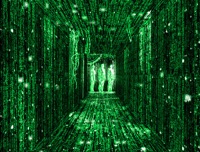Difference between revisions of "Codes"
m (Text replacement - "http://" to "https://") |
|||
| Line 3: | Line 3: | ||
==Origin== | ==Origin== | ||
Latin ''cōdex'' , later spelling of ''caudex'' trunk of a tree, wooden tablet, [[book]], code of [[laws]]. | Latin ''cōdex'' , later spelling of ''caudex'' trunk of a tree, wooden tablet, [[book]], code of [[laws]]. | ||
| − | *[ | + | *[https://en.wikipedia.org/wiki/14th_century 14th Century] |
==Definitions== | ==Definitions== | ||
*1: a systematic [[statement]] of a [[body]] of [[law]]; especially : one given statutory [[force]] | *1: a systematic [[statement]] of a [[body]] of [[law]]; especially : one given statutory [[force]] | ||
| Line 16: | Line 16: | ||
In [[communications]] and [[information]] processing, encoding is the [[process]] by which [[information]] from a [[source]] is converted into [[symbols]] to be communicated. Decoding is the reverse process, converting these code symbols back into [[information]] understandable by a receiver. | In [[communications]] and [[information]] processing, encoding is the [[process]] by which [[information]] from a [[source]] is converted into [[symbols]] to be communicated. Decoding is the reverse process, converting these code symbols back into [[information]] understandable by a receiver. | ||
| − | One reason for coding is to enable [[communication]] in places where ordinary [[spoken]] or [[written]] language is [[difficult]] or impossible. For example, semaphore, where the configuration of flags held signaller or the arms of a [ | + | One reason for coding is to enable [[communication]] in places where ordinary [[spoken]] or [[written]] language is [[difficult]] or impossible. For example, semaphore, where the configuration of flags held signaller or the arms of a [https://en.wikipedia.org/wiki/Semaphore_line semaphore tower] encodes parts of the [[message]], typically individual [[letters]] and [[numbers]]. Another person standing a great distance away can [[interpret]] the flags and reproduce the [[words]] sent.[https://en.wikipedia.org/wiki/Code] |
[[Category: Languages and Literature]] | [[Category: Languages and Literature]] | ||
Latest revision as of 23:42, 12 December 2020
Origin
Latin cōdex , later spelling of caudex trunk of a tree, wooden tablet, book, code of laws.
Definitions
- 1: a systematic statement of a body of law; especially : one given statutory force
- 2: a system of principles or rules <moral code>
- 3a : a system of signals or symbols for communication
- b : a system of symbols (as letters or numbers) used to represent assigned and often secret meanings
Description
A code is a rule for converting a piece of information (for example, a letter, word, phrase, or gesture) into another form or representation (one sign into another sign), not necessarily of the same type.
In communications and information processing, encoding is the process by which information from a source is converted into symbols to be communicated. Decoding is the reverse process, converting these code symbols back into information understandable by a receiver.
One reason for coding is to enable communication in places where ordinary spoken or written language is difficult or impossible. For example, semaphore, where the configuration of flags held signaller or the arms of a semaphore tower encodes parts of the message, typically individual letters and numbers. Another person standing a great distance away can interpret the flags and reproduce the words sent.[1]
